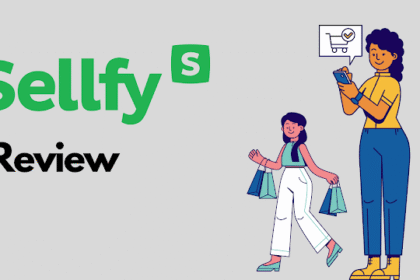1. AICAN: The First AI Artist
AICAN is an AI art generator developed by Dr. Ahmed Elgammal and his team at Rutgers University. This sophisticated neural network is trained on a dataset that includes over 80,000 artworks spanning various styles and periods. AICAN creates original pieces by emulating various artistic techniques, experimenting with color, form, and composition. One notable achievement was when AICAN’s artwork titled “Edmond de Belamy” was auctioned at Christie’s for an astounding $432,500. This event highlighted AI’s potential to transcend traditional artistic boundaries, provoking discussions about authorship and the essence of creativity itself.
- 1. AICAN: The First AI Artist
- 2. OpenAI’s DALL-E: Imagination Into Images
- 3. The Portrait of Edmond de Belamy: An AI Masterpiece
- 4. AI in Music Composition: AIVA
- 5. Amper Music: Democratizing Music Creation
- 6. AI in Film Editing: Magisto
- 7. GANs in Fashion Design: The AI Couture
- 8. The Art of Storytelling: AI-Generated Literature
- 9. The Future of Dance: AI Choreography
- Final Thoughts
2. OpenAI’s DALL-E: Imagination Into Images
DALL-E, a revolutionary AI tool developed by OpenAI, is designed to generate images from textual descriptions. The AI uses deep learning to interpret text inputs, allowing it to visualize concepts that may not exist in reality. For example, when given the prompt “an armchair in the shape of an avocado,” DALL-E produces images that creatively interpret this unusual request. This innovation empowers artists, designers, and marketers by providing a novel way to brainstorm and visualize ideas, thus fostering creativity in both traditional and digital art realms.
3. The Portrait of Edmond de Belamy: An AI Masterpiece
The Portrait of Edmond de Belamy is the first AI-generated artwork to be sold at a major auction house. Created by the Paris-based art collective Obvious using a machine learning algorithm called Generative Adversarial Networks (GANs), the piece is a blend of historical portraiture with a contemporary twist. The creators trained the AI on portraits spanning six centuries, infusing the artwork with characteristics drawn from various epochs. This landmark sale raised questions about the nature of creativity and originality in art, positioning AI as a legitimate collaborator in the creative process.
4. AI in Music Composition: AIVA
AIVA (Artificial Intelligence Virtual Artist) is an AI composition software that creates original music scores in various genres. Trained on an extensive database of classical music, AIVA generates pieces that reflect the intricate structures, harmonies, and emotional depth characteristic of human composers. AIVA has even composed soundtracks for video games, films, and advertisements. By integrating AI into music production, artists can draw inspiration from the works generated by AIVA, expanding their creative capabilities and pushing musical boundaries.
5. Amper Music: Democratizing Music Creation
Amper Music is an AI-powered platform that enables users to compose and customize music without needing to have prior music training. Users can select the genre, mood, and desired length, and Amper generates a piece tailored to their specifications. This tool has transformed the way content creators approach music, making it accessible for everyone—from filmmakers to podcasters. By simplifying the music composition process, Amper not only fosters creativity but also encourages collaboration across diverse creative fields.
6. AI in Film Editing: Magisto
Magisto is an AI-driven video editing application that allows users to transform raw footage into polished films effortlessly. By utilizing artificial intelligence, Magisto analyzes video clips, identifying key moments, camera angles, and even emotions. The platform intelligently edits the visuals, selects optimal music, and adds effects to create engaging narratives. This has empowered countless video creators, from amateur vloggers to professional filmmakers, enabling them to produce high-quality content efficiently and effectively.
7. GANs in Fashion Design: The AI Couture
Generative Adversarial Networks (GANs) are making waves in the fashion industry, with designers like Anouck A. invoking AI to generate cutting-edge clothing designs. Using algorithms trained on thousands of fashion images, AI can create visually appealing and innovative designs that may not conform to typical fashion norms. This application not only highlights the potential for creative exploration in fashion but also challenges traditional design processes, inspiring designers to rethink their approach and collaborate with technology to generate unique collections.
8. The Art of Storytelling: AI-Generated Literature
AI is also making strides in the literary field with programs like OpenAI’s GPT-3, capable of generating coherent narratives, poetry, and dialogue. Authors can leverage AI to brainstorm ideas, develop characters, or even create entire plots. A striking instance involves a short story written collaboratively between a human and the AI, resulting in a narrative that exhibited both human emotion and machine precision. This intersection of AI and literature illustrates the collaborative potential between technology and traditional storytelling, opening new avenues for exploration in creative writing.
9. The Future of Dance: AI Choreography
AI is venturing into the world of dance with tools that analyze movements and create unique choreography. Projects like “Choreographed by AI” explore how machine learning can learn from existing dance performances, generating new routines that blend various styles. This has opened up exciting possibilities for dancers and choreographers, as they can incorporate AI-generated movements into their performances or create new styles altogether. By integrating AI into the dance-making process, artists can push their creative boundaries and explore new forms of expression.
Final Thoughts
The influence of AI in creative arts is a rapidly evolving phenomenon, marking a significant shift in how artists, musicians, writers, and dancers engage with their crafts. From generating innovative artworks to composing music and writing literature, AI serves as both a tool and a collaborator, redefining creativity in today’s digital landscape. As these technologies develop, the future of creative arts promises continued exploration and inspiration, blending the genius of human imagination with the remarkable capabilities of artificial intelligence.




